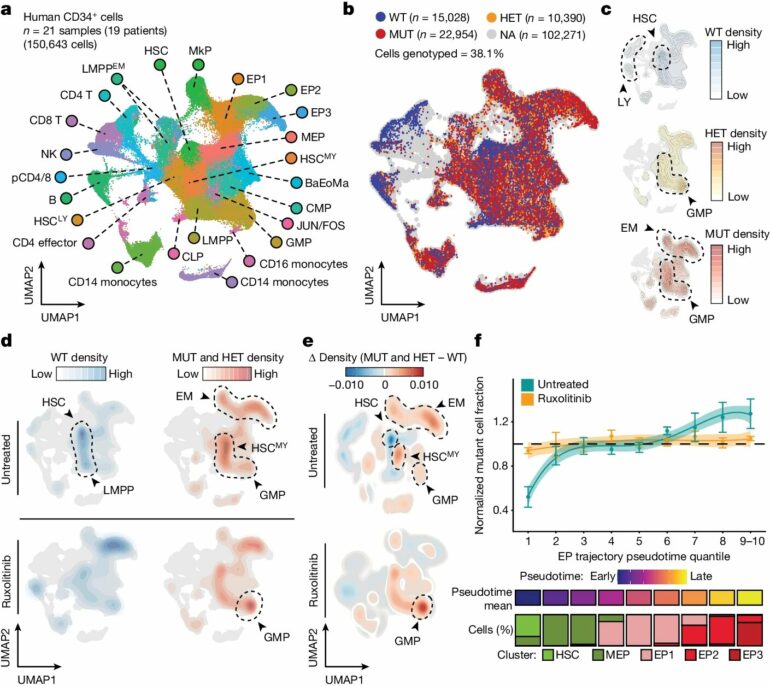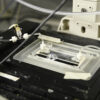A team co-led by researchers at Weill Cornell Medicine and the New York Genome Center has developed an advanced method for revealing how gene mutations disrupt the normal packaging of DNA. These structural changes, which alter patterns of gene activity in a cell, are known as epigenetic changes and can lead to malignancy.
The new method, described in a paper published in Nature, offers biologists a powerful tool that can be applied in many fields of investigation, from basic cell biology to the study of how cancers originate. The researchers demonstrated the new method by using it to illuminate how a common gene mutation exerts its effects on two rare blood cancers.
“This new technique should permit broad future explorations of the links between mutations and epigenetic alterations in the context of cancers and related conditions,” said study senior author Dr. Dan Landau, a professor of medicine in the Division of Hematology and Medical Oncology at Weill Cornell Medicine and a core faculty member at the New York Genome Center.
The study was co-led by Dr. Franco Izzo, a postdoctoral researcher in the Landau Lab during the study, now an assistant professor at the Icahn School of Medicine at Mount Sinai.
The new achievement is the latest in a series of single-cell profiling innovations from Landau’s research group. Such methods, also called “single-cell multi-omics” methods, enable researchers to characterize DNA mutations, gene activity patterns, cell-surface proteins, and other layers of information—all in an individual cell, using automation to process many thousands of cells at a time.
In contrast, older methods are used on bulk samples, which typically contain mixes of different cell types as well as both mutated and non-mutated cells—greatly limiting any analysis.
In this case, the team developed a more sensitive and accurate single-cell method for detecting DNA mutations of interest. They then combined this with a new technique for mapping a cell’s “chromatin accessibility”—essentially the places where DNA is relatively open and accessible for gene transcription—as a broad picture of the cell’s epigenetic state.
The researchers termed these paired techniques “Genotyping of Targeted loci with single-cell Chromatin Accessibility,” or “GoT-ChA,” and showed they could integrate GoT-ChA with single-cell methods for profiling other information layers such as RNAs and cell-surface proteins.
The scientists demonstrated the power of their new toolkit by using it to study blood cells sampled from patients with two rare blood cancers, polycythemia vera, and myelofibrosis. These cancers are usually driven by a specific mutation in a gene called JAK2—a mutation that has been implicated in other conditions and is also found in many seemingly healthy people.
Both cancers also feature disruptions of the normal blood cell maturation process, which implies that the JAK2 mutation induces significant epigenetic changes—but the limitations of older methods meant that these epigenetic changes and other downstream effects of the mutation were not well understood. With GoT-ChA, the researchers were able to catalog these effects in great detail.
“It was thought that in myelofibrosis, for example, bone marrow inflammation is driven by the marrow microenvironment, but we discovered that inflammatory changes in blood stem cells directly result from the JAK2 mutation and also depend on the cell type,” said Landau, who’s also a member of the Sandra and Edward Meyer Cancer Center and the Englander Institute of Precision Medicine at Weill Cornell Medicine.
The results suggest that potent new JAK2 inhibitor drugs, currently in development, might be helpful in treating myelofibrosis patients, he said.
Landau noted that GoT-ChA should be generally useful for studying conditions in which DNA mutations—which can arise throughout life for various reasons—are present in only a minority of cells in an organ and are, therefore, hard or impossible to study with traditional, pre-single-cell techniques.
The study’s co-first authors, in addition to Izzo, were M.D.-Ph.D. student Robert Myers, postdoctoral fellow Saravanan Ganesan, and doctoral candidate Levan Mekerishvili, all of the Landau Laboratory.
More information:
Franco Izzo et al, Mapping genotypes to chromatin accessibility profiles in single cells, Nature (2024). DOI: 10.1038/s41586-024-07388-y
Provided by
Cornell University
Citation:
GoT-ChA: New tool reveals how gene mutations affect cells (2024, May 10)



